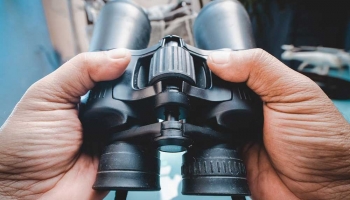What Is the Difference Between 10×50 and 12×50 Binoculars?
Binoculars are some of the most commonly used optical instruments. Usually, the devices are handheld and are designed to provide a magnified stereoscopic view of distant objects. Essentially, binoculars are two telescopes mounted on a single frame.
You may experience some confusion when shopping for binoculars. At first glance, they may look similar, but they vary in terms of size, type, and features. For example, in some devices, a single thumbwheel adjusts the focus of both telescopes simultaneously. Others allow you to control the focus separately to ensure you get varying characteristics in both telescopes.
What’s the Difference Between Magnification Power and Objective Lens?
One of the easiest ways to identify the ideal binocular for different uses is their description. For example, you may find 10×50 and 12×50 binoculars. The first number represents the magnification power of the optical tools.
A 10×50 device will bring images 10 times closer and a 12×50 will bring it 12 times closer than when viewing them using your naked eyes. It may seem like a higher number can translate to better images. However, this isn’t necessarily the case. High magnification makes it harder for users to hold images steady in view. Higher magnification is recommended if you are stationary and when viewing small objects at a great distance. If you intend to use your binoculars while moving or for quick focusing, use devices with lower magnification.
The second number represents the size of the front lens. Both 10×50 and 12×50 binoculars have a diameter of 50 millimeters. The larger the lens, the more light the instruments let in. Large lenses are ideal for dark environments.
The main drawback of large lenses is that they make binoculars larger and heavier. If you carry heavy items, consider using binoculars with smaller lenses so you can hold them steady without having to brace your arms.
What Are the Main Types of Binoculars?
Although the optical instruments have similar basic lenses, they vary in many ways. They are classified into two broad categories: Porro prism and roof.
Porro prism types are the most common in the market. Their optical path is bent like the letter Z. This gives the devices their unique shape, where the objective lenses are wider than eyepiece lenses. If you want to know more read reviews of Maid In Morristown here. As a result, the images from the objective lens are reflected by two prisms. They’re popular because they produce clear images and are easy to manufacture. However, most of them are heavy and large, which can be inconvenient for some users.
In roof binoculars, objective and eyepiece lenses are in a straight line. This feature makes it harder for users to get crisp, clear images. However, some people prefer the roof devices due to their ergonomic design and their ability to handle higher impact. They are also compact and ideal for traveling. As a result, roof binoculars tend to more expensive than Porro prism pairs.




